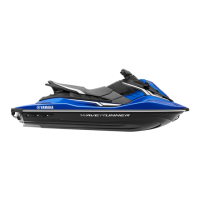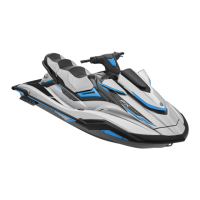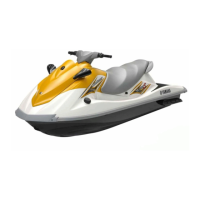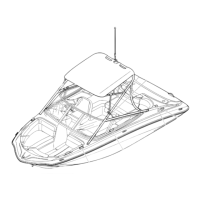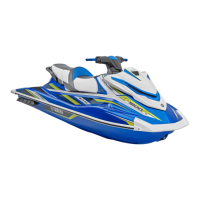Do you have a question about the Yamaha 2012 WaveRunner VX Sport and is the answer not in the manual?
Welcome message and guidance on using the owner's manual for proper operation and maintenance.
PRI-ID, HIN, and engine serial numbers for identification and parts ordering.
Information on emission compliance labels and manufactured date label location.
Visual identification and critical safety warnings from labels on the watercraft.
Specifies age, supervision, passenger limits, and load capacity for safe operation.
Rules for visibility, speed, defensive operation, and water conditions.
Essential use of PFDs, protective clothing, and recommended safety equipment.
Details operational hazards, propulsion, and steering system features.
Safety for water-skiing and adherence to general safe boating regulations.
Promotes respect for others, nature, and proper maintenance for shared waterway enjoyment.
Defines key terms and speeds related to watercraft operation.
Illustrates and identifies major exterior and interior watercraft components.
Details key parts located within the watercraft's engine compartment.
Introduction to the primary control systems of the watercraft.
Operation of the remote transmitter, security system, and Low RPM Mode settings.
How to operate engine switches, throttle lever, and steering system.
Explains cooling water discharge and the function of the water separator.
Details fundamental operations like the reverse system and its use.
Information on activating and using different operational modes like Low RPM Mode.
Overview of the central display unit for monitoring watercraft status and conditions.
Explains how to read the speedometer, tachometer, fuel levels, and warning indicators.
Instructions for seat removal/installation and use of handgrips/reboarding steps.
Details bow/stern eyes, cleats, and storage compartment usage and limitations.
Information on the glove compartment and its integrated beverage holder.
Instructions for using and securing the fire extinguisher holder and cover.
Critical requirements for fuel type, octane, and engine oil for performance and longevity.
Procedures for draining bilge water and safely transporting the watercraft on a trailer.
Essential steps for breaking in the engine to ensure optimal performance and lifespan.
A comprehensive list of checks to perform before operating the watercraft.
Detailed checks for the engine compartment, fuel, oil, battery, and systems before launching.
Checks to perform after launching, including engine idling speed and cooling water flow.
Guidance on familiarizing with controls, riding position, and launching.
Procedures for starting, stopping the engine, and leaving the watercraft safely.
Techniques for turning, stopping, and using the reverse system for control.
Instructions for boarding from water/dock and starting off safely.
Steps for uprighting a capsized craft and safely beaching or docking.
Procedures for discharging water from cooling passages after use.
Essential cleaning, flushing of cooling passages, and battery care after operation.
Guidelines for long-term storage, cleaning, lubrication, and rustproofing.
Overview of maintenance importance, included tool kit, and periodic maintenance chart.
Procedures for changing engine oil and the oil filter for engine health.
A comprehensive chart to diagnose and resolve common operating problems.
Steps for critical situations like clogged intakes, battery issues, towing, and submerged units.
| Number of Cylinders | 4 |
|---|---|
| Displacement | 1052cc |
| Bore x Stroke | 76.0mm x 58.0mm |
| Compression Ratio | 11.0:1 |
| Fuel Delivery System | Electronic Fuel Injection |
| Starting System | Electric |
| Lubrication System | Wet Sump |
| Fuel Capacity | 15.9 gal |
| Length | 126.8 inches |
| Width | 46.1 inches |
| Weight | 794 lbs (360 kg) |
| Storage Capacity | 15.1 gallons |
| Passenger Capacity | 1-3 person |
| Hull Material | Fiberglass |
| Cooling System | Open Loop, Water |



